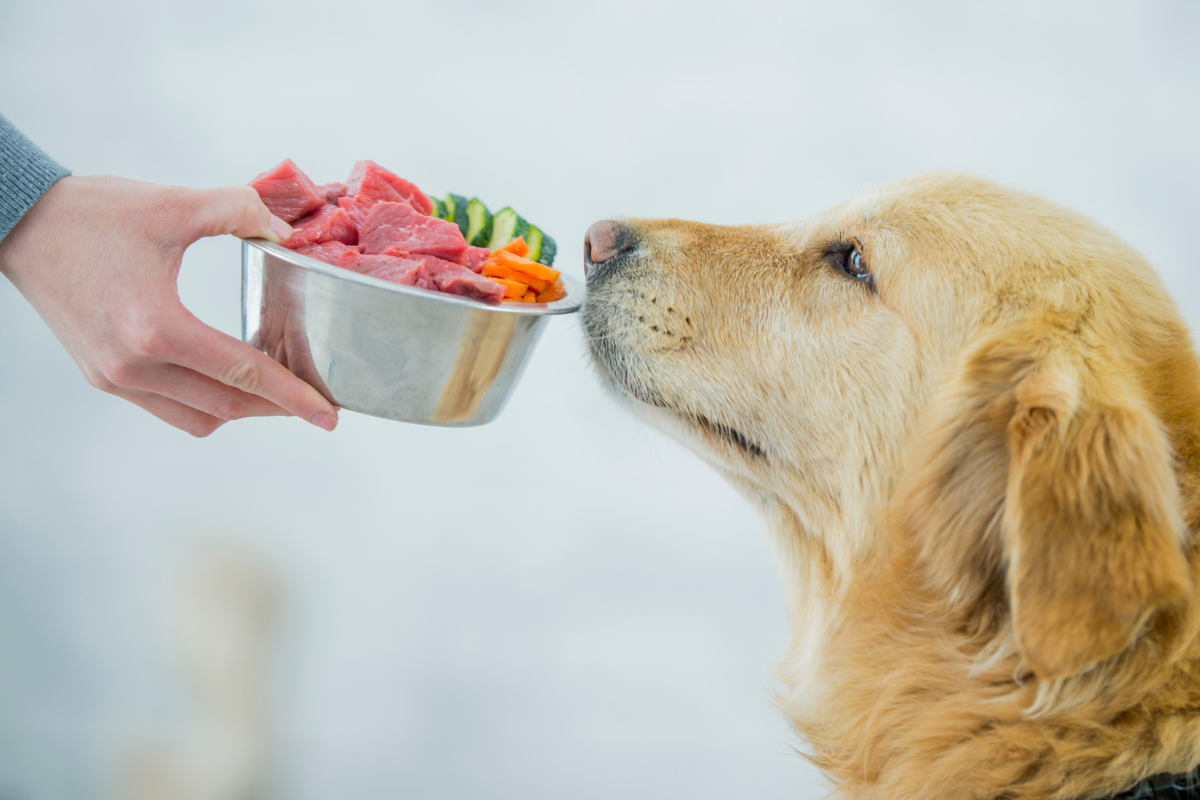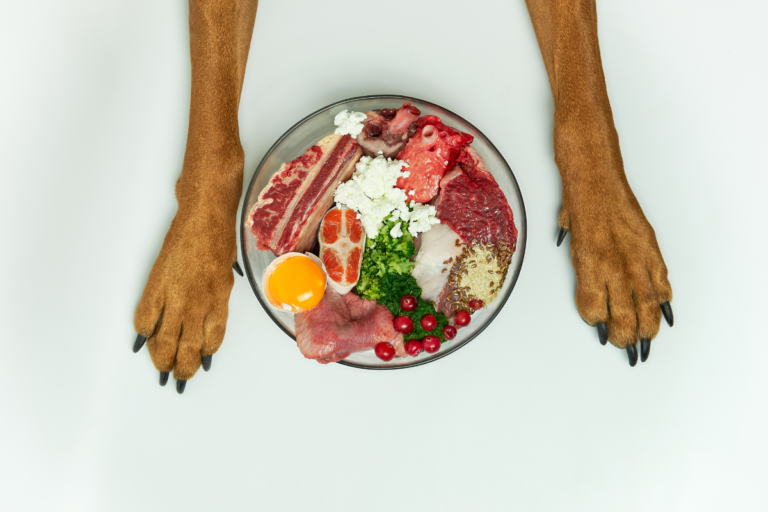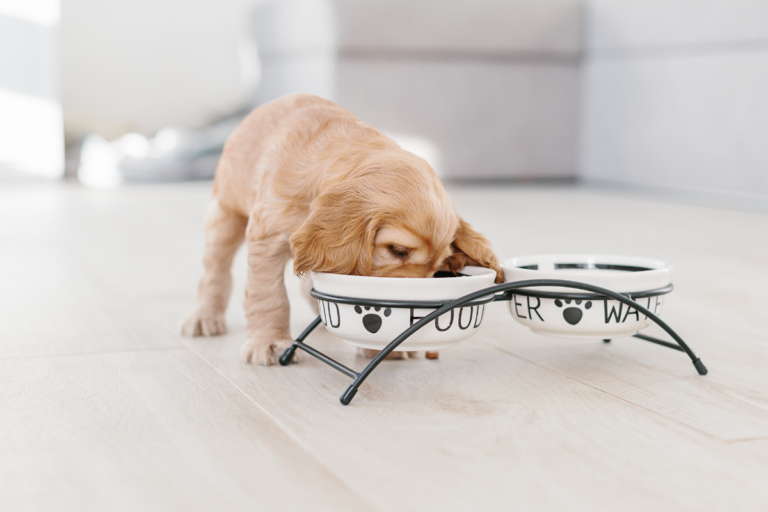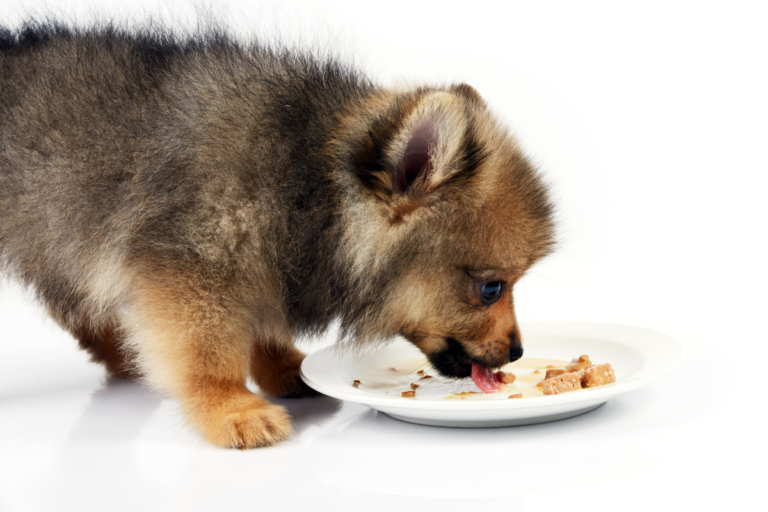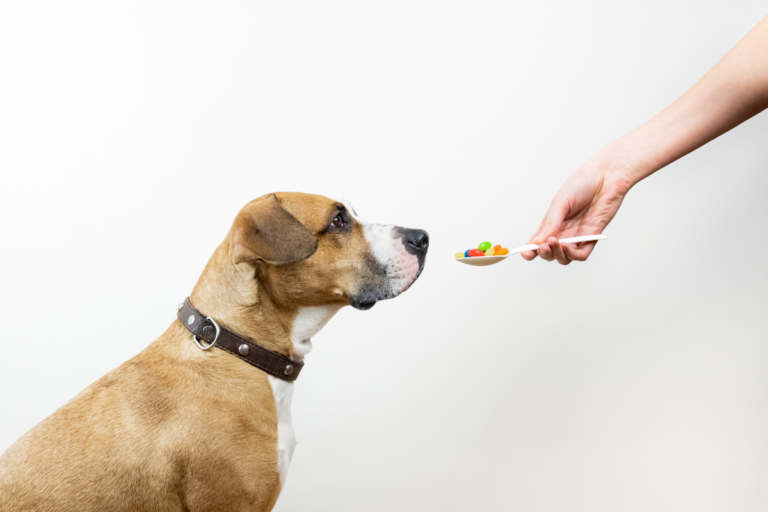Fuel Your Furry Friend: Building a Balanced Dog Diet Chart
Dog Nutrition Essentials
Keeping our pups wagging and full of energy is all about what goes in their bowls. When we give them the nourishment they need, we’re setting them up for tail-wagging happiness and good health.
Understanding Nutrient Needs
Dogs need a buffet of nutrients to keep them in tip-top shape. These essentials include water, proteins, fats, carbohydrates, minerals, and vitamins. Each plays its part in making sure our canine buddies are full of life.
| Nutrient | Why It’s Important |
|---|---|
| Water | Yep, it’s that simple—keeps them hydrated and all systems go. |
| Proteins | Think of proteins like building blocks for their muscles, tendons, and super shiny coats. Breaks down into amino acids, essential for every function. |
| Fats | Not just for energy; fats get those fat-soluble vitamins rocking and rollin’. |
| Carbohydrates | The carbs help with energy and keep their meals moving through the tummy. |
| Minerals | Bare bones health—literally—it’s what makes their bones strong and nerves zippy. |
| Vitamins | From boosting immunity to sharpening vision, vitamins do a lot more than just make a healthy snack. |
Every dog is a little different, so what’s perfect for a Labradoodle may not work for a Basset Hound. Peek at different dog diet charts to find what’s best for your fur kid.
Importance of Balanced Diet
Feeding our fur pals the right stuff can add years of belly rubs and bark parks to their lives. Balanced meals full of good proteins, those fancy omega-3s, and a rainbow of antioxidants are the secret sauce. The dog food police—also known as the Association of American Feed Control Officials (AAFCO)—have guidelines to keep grub up to snuff. But getting a thumbs-up from a vet nutritionist ain’t too shabby either.
Key Nutrients for Dogs
Every nutrient has its starring role to play in our pup’s overall show:
- Proteins: Big players for muscle and skin, they’re the repair crew that keep everything humming.
- Fats: The cozy power source, fats also help their gorgeous fur glow.
- Carbohydrates: Energy boosters and digestion helpers.
- Vitamins and Minerals: They’re the all-rounders—supporting everything from bones to immune systems.
| Nutrient | Sources | Benefits |
|---|---|---|
| Quality Protein | Chicken, Fish, Beef | Muscles, repair, energy, and immune functions. |
| Omega-3 Fatty Acids | Fish oil, Flaxseed | Keep swelling at bay, boost brain smarts, and keep their coats dapper. |
| Antioxidants | Blueberries, Carrots | Knock out free radicals and keep the wolves of aging at the door. |
| Vitamins & Minerals | Sweet Potatoes, Spinach | Strong bones, clear sight, and keep those nerve endings chatting away. |
By getting our heads around what goes into our pup’s meals and making sure it’s balanced, we’re giving them a big leg-up in living their best, furriest life. Each dog needs a little tweak here and there depending on whether they’re zoomies-loving puppies or couch snugglers. For those who want to dive a bit deeper, check out our puppy nutrition chart or labrador dog food chart.
Feeding Guidelines for Dogs
Feeding our four-legged pals the right chow is crucial for their overall mojo. We’ve gotta nail down various things like their age, size, and how much they zoom around to get their dietary needs spot-on. Let’s chat about the age and size stuff, how many calories the fellas need, and how often to fill up their bowls.
Age and Size Considerations
Doggy diets aren’t a one-size-fits-all kinda deal. Puppies, grown-ups, and the grey-muzzled seniors have their own menu requirements to keep them sprightly and chipper.
Puppies
Puppies grow quicker than weeds and need loads of energy-packed grub. Their meals need to be bursting with calories, protein, and all those good nutrients. They should be munching three to four times a day to keep up with their zoomies. For the nitty-gritty, you might wanna peek at our puppy diet chart.
| Puppy Age | Feedings per Day |
|---|---|
| 0-3 months | 4-5 |
| 3-6 months | 3-4 |
| 6-12 months | 2-3 |
Adults
Adult dogs’ meals depend on their dream weight. Typically, they’re fine with two square meals a day, one when the sun’s rising and one as it sets. Make sure portions fit their size and how much they hustle (PetMD).
| Dog Size | Feedings per Day |
|---|---|
| Small (up to 20 lbs) | 2-3 |
| Medium (21-50 lbs) | 2 |
| Large (51-100 lbs) | 2 |
| Giant (over 100 lbs) | 2 |
Seniors
Once they hit the golden years (7-12ish), seniors don’t burn calories like they used to (PetMD). They need chow that keeps the pounds off and those old joints in shape.
Caloric Requirements
How much chow a dog needs? Depends. Size, age, how often they play fetch, and budding puppies or not—all matter. Keep an eye on calories to avoid turning your pooch into a couch potato.
| Dog Weight | Daily Caloric Requirements |
|---|---|
| 10 lbs | 200 – 275 |
| 20 lbs | 325 – 400 |
| 50 lbs | 700 – 900 |
| 75 lbs | 1000 – 1250 |
| 100 lbs | 1225 – 1550 |
These are ballpark figures. Chat with the vet to tune in the calories just right. Got more questions? Hit up our dog diet chart.
Meal Frequency
How often should the bowls get refilled? Changes with age and size. Meal timing’s a big deal for keeping the pups in tip-top shape.
- Puppies: Those little fluffballs need more meals to keep up with all that bouncing around. As they shed their puppy fat, cut down on feedings gradually.
- Adults: Two meals work well for most adults. Keeps ’em fuelled and ready for adventures or a snooze on the sofa.
- Seniors: For our older fellows, smaller, more frequent snacks help with digestion and stopping any extra pounds sneakily piling on.
Sticking to a schedule helps keep nasty tummy troubles at bay and gives your dog steady energy through the day. Looking for tips? Check our piece on meal timing importance.
By mastering these feeding guidelines, we can make sure our furry family members stay bright-eyed and bushy-tailed. Have a look at our good raw diet for dogs and board certified veterinary nutritionist recipes for more tasty bites on dog nutrition.
Optimal Diet for Canine Health
Managing Portion Sizes
We’ve all been there – staring at our dog’s sad eyes, wondering if we’re giving them the right amount of kibble. Giving your pooch the right portion isn’t just guesswork; it’s a way to keep them healthy and happy. After all, not all pups are created equal. A rambunctious Lab’s diet isn’t going to match that of a snuggly Shih Tzu. Think about details like age, size, and how much they shake a leg during the day.
To simplify things, check out this handy table for what to dish out depending on their weight:
| Dog Weight (lbs) | Daily Food Amount (cups) |
|---|---|
| Up to 10 | 1/4 – 1/2 |
| 10-20 | 1/2 – 1 |
| 20-30 | 1 – 1.5 |
| 30-40 | 1.5 – 2 |
| 40-50 | 2 – 2.5 |
| 50-60 | 2.5 – 3 |
| 60-70 | 3 – 3.5 |
| 70-80 | 3.5 – 4 |
| 80-90 | 4 – 4.5 |
Got a puppy? Those bundles of energy have their own set of rules. For more puppy specifics, take a peek at our puppy diet chart and puppies food chart.
Health Risks of Overfeeding
Overfeeding – it’s like letting your pup wear a Halloween costume that’s a size too small – leads to obesity. They might not complain, but their bodies do. Did you know that nearly 6 out of 10 dogs are battling the bulge? This isn’t just a numbers game; it’s about dodging a host of nasty issues like diabetes, heart problems, and creaky joints. Keeping us on track with portions means inviting our best friends to live their longest, waggiest lives.
Watch out for these health hiccups when overfeeding becomes a habit:
- Obesity: Outcomes like diabetes, blood pressure creepin’ up, and achy joints become all too real.
- Wonky Heart: Carrying extra weight makes Fido’s heart work harder than it should.
- Diabetes: Extra pounds means rolling the dice on diabetes.
- Joint Pain: Those added LBs? They put a mega strain on bones and joints.
Breaking up your dog’s daily grub into a few meals can help. While the menu varies, most adults chow down two to five times a day based on size and energy.
Avoid Harmful Foods
Leaving out a juicy steak should be the least of concerns when it comes to sharing snacks. Some foods are seriously sketchy for dogs, and being vigilant can mean everything to their health. Here’s what to keep off their plate:
- Chocolate: It’s a no-brainer chocolate is a killer, loaded with theobromine that spells disaster.
- Grapes and Raisins: Seem harmless, but they can cause kidney havoc.
- Onions and Garlic: These culprits wreck red blood cells, leading to anemia.
- Alcohol: Even a smidge can get them tipsy—and not in a fun way.
- Caffeine: Makes them antsy, with heart and muscle worries brewing.
For more on keeping your dog’s diet safe and sound, check out our choosing the right dog food section.
Crafting a top-notch diet for our furry buddies is all about smart servings and dodging danger zones. Stay in touch with your vet, and you’ve got a recipe for vivid tails and bright eyes. For more expert tips on dog nutrition, make sure to look at our best raw diet for dogs and good raw diet for dogs articles.
Personalized Diet Plans for Dogs
Building the perfect menu for your pup can make a big difference in their health and happiness. We’re here to guide you through creating the best dog diet chart that suits your dog’s unique needs.
Breed-Specific Feeds
Every dog breed comes with its own nutritional quirks. Knowing what your dog’s breed needs can help you put together a top-notch diet. Big dogs like Labradors often need food that looks after their joints, while little guys like Chihuahuas thrive on more calories packed into smaller kibble. Swing by our Labrador dog food chart for even more tailored tips.
| Breed | Key Nutritional Considerations |
|---|---|
| Labrador | Joint care, Omega-3s |
| Chihuahua | Dense calories, smaller bites |
| Beagle | Balanced protein, moderate fats |
| German Shepherd | Tummy health, quality proteins |
Source: VCA Hospitals
Diets Based on Doggie Lifestyles
A dog’s lifestyle and activities shape what they should eat. Those with busy days, like agility champs or hiking buddies, need more fuel—think protein and calories. On the other side, our couch-loving senior pooches do better with fewer calories and a bit more fiber for good digestion. Tweak serving sizes to fit their day-to-day pace for a healthy weight and happy life. For the go-getters, check out advice on a good raw diet for dogs.
| Lifestyle | Dietary Tweaks |
|---|---|
| Very Active | More protein, extra calories |
| Moderately Active | Steady diet, balanced calorie count |
| Less Active | Lower calories, add fiber |
| Older Dogs | Cut calories, add joint helpers |
Source: AAHA
Crafting a Custom Diet Plan
Each dog brings its own needs to the table, and store-bought solutions don’t always fit. Chat with your vet or a board-certified veterinary nutritionist to whip up a tailor-made diet just for your pal. Diets might take into account allergies, health problems, or just plain picky eaters.
Key nutritional must-haves in a custom diet include:
- Protein: Keeps muscles strong and healthy.
- Fats: Energy boosters and shiny coat supporters.
- Carbohydrates: For fiber and fuel.
- Vitamins & Minerals: They work wonders across the board.
Discover meal ideas and nutrition goodies in our best raw diet for dogs section.
Taking the time to shape your dog’s diet to fit their breed, lifestyle, and needs can lead to a healthier and happier life for them. For more feeding tips, swing by our puppy nutrition chart and explore some handy advice for your furry family member.
When you factor in their breed, daily routines, and peculiar preferences, you’re setting the table for a healthy and cheerful canine companion.
Choosing the Right Dog Food
We’ve all been there, lost in that overwhelming pet food aisle, trying to decipher what won’t just fill up our furry pals but truly keep them wagging. Here’s a down-to-earth guide on picking out dog food that ticks all the boxes for your four-legged buddy.
Quality Ingredients
It matters what goes into that bowl. The Association of American Feed Control Officials (AAFCO) has handy guidelines for what dog food should pack. Make sure the chow you pick has their thumbs up. Our tail-waggers thrive on a balanced diet, and here’s what needs to be in it:
- Proteins: These are as essential for dogs as coffee is for us on a Monday morning. They build and fix everything from muscles to nails. Your pooch needs 10 key amino acids to stay in tip-top shape (PetMD).
- Fats: Think of fats as the battery pack, giving energy and keeping that coat glossy.
- Carbohydrates: Give your pup the gusto! They fuel them up and help their tummies stay regular.
- Vitamins and Minerals: They’re like the tiny cheerleaders for general health.
Reading Nutritional Labels
Here’s the trick with labels: they can be sneaky! The top ingredients make up most of what you’re feeding. Look for real meat or fish as the stars. Ensure there’s a nod from AAFCO on the package, confirming it’s got the good stuff your pooch needs daily (PetMD).
| Nutrient | Why it Matters |
|---|---|
| Proteins | Builds muscle, repairs tissues |
| Fats | Powers them up, shiny coat |
| Carbohydrates | Energizes, aids digestion |
| Vitamins | Boosts immunity, keeps things ticking |
| Minerals | Strong bones, fluid check |
Veterinary Recommendations
Thinking, “What would the vet say?” Consult them! They know the skinny on what each breed or age group needs. For specific breed diets, sneak a peek at our breed-specific diet plans.
Veterinarian-approved foods usually mean they’ve been given the gold star for quality. Sometimes, our pups have unique dietary needs that a vet can help pinpoint.
In the end, investing in primo dog food is like putting your pooch’s happiness first. For deeper dives into balanced dog diets, swing by our dog diet chart and see why a good raw diet for dogs might be worth a look. Let’s make every meal a happy, healthy one, and remember, your vet is your best ally in this chow-choosing mission.
Feeding Schedule Tips
Creating a solid meal plan for our dogs can make a big difference in how they feel and act. We’ll chat about why meal timing matters, avoiding any tummy troubles, and how sticking to a regular feeding routine can do wonders.
Meal Timing Importance
Our canine buddies should sit down for a meal twice a day, about 12 hours apart. If you want to spoil them with a breakfast, lunch, and dinner plan – go ahead, it’s super helpful. But, if you let more than 12 hours pass without a meal, you’ll be dealing with a queasy pup, thanks to that hyperacidic stomach.
| Time of Day | Meal Frequency |
|---|---|
| Morning | Breakfast |
| Noon | Lunch (optional) |
| Evening | Dinner |
Keeping things consistent not only keeps their bellies happy, but also keeps those nasty acid tummy rumbles away. Regular meals mean no hunger tantrums or acid complaints.
Preventing Digestive Issues
Watch out for overindulging or skipping meals, as these can lead to issues like bloating, nausea, or sluggish digestion. Maintaining at least two meals daily keeps things running smoothly, just like clockwork.
Our furry pals have stomachs that work similarly to ours. After a few hours of munching, everything gets digested, and after about 8 to 10 hours, hunger signs start blaring like an alarm clock. Keeping a steady meal routine is a no-brainer.
Check out our dog diet chart and puppy nutrition chart to get on the right track.
Establishing Routine
Routine is like a trusty old friend for dogs. Having a predictable meal schedule not only keeps them healthy but also helps them feel settled, even if life gets a bit chaotic. Plus, if new grub is on the menu, their bodies are ready to handle the change like pros.
Pups thrive on routine. Setting regular chow times calms their nerves and makes them feel at ease.
For special diet ideas, take a peek at our lifestyle-adjusted nutrition and breed-specific diets. This helps make the most of their meals.
Let’s make sure our pups live their best lives by embracing these feeding tips and keeping them well-fed.
